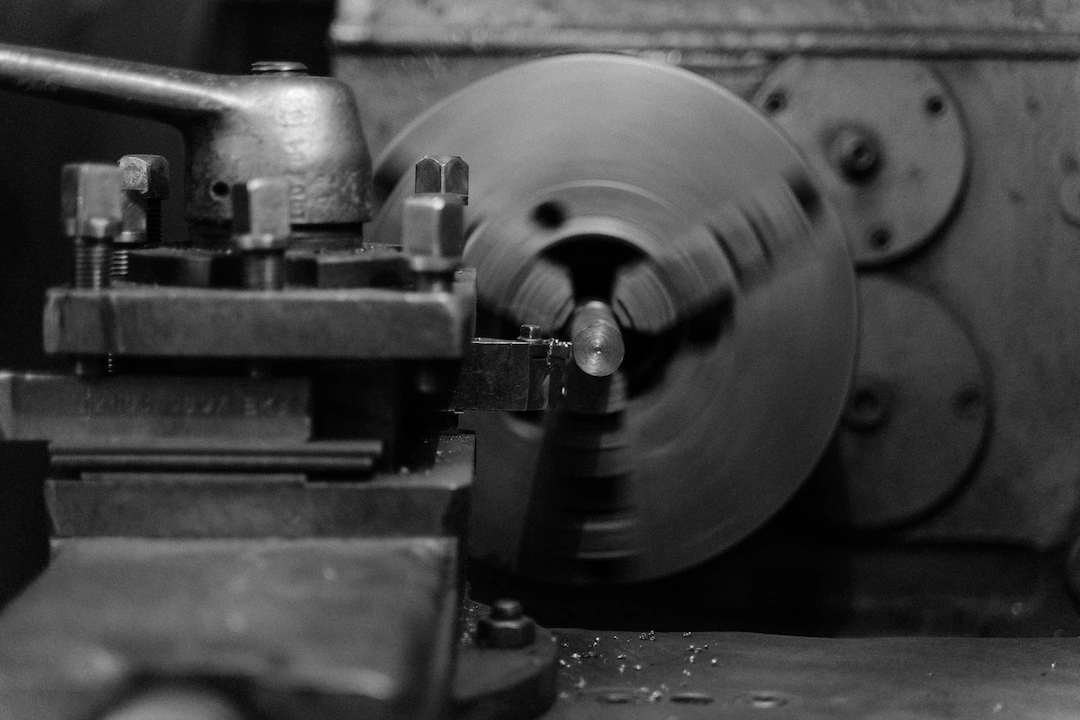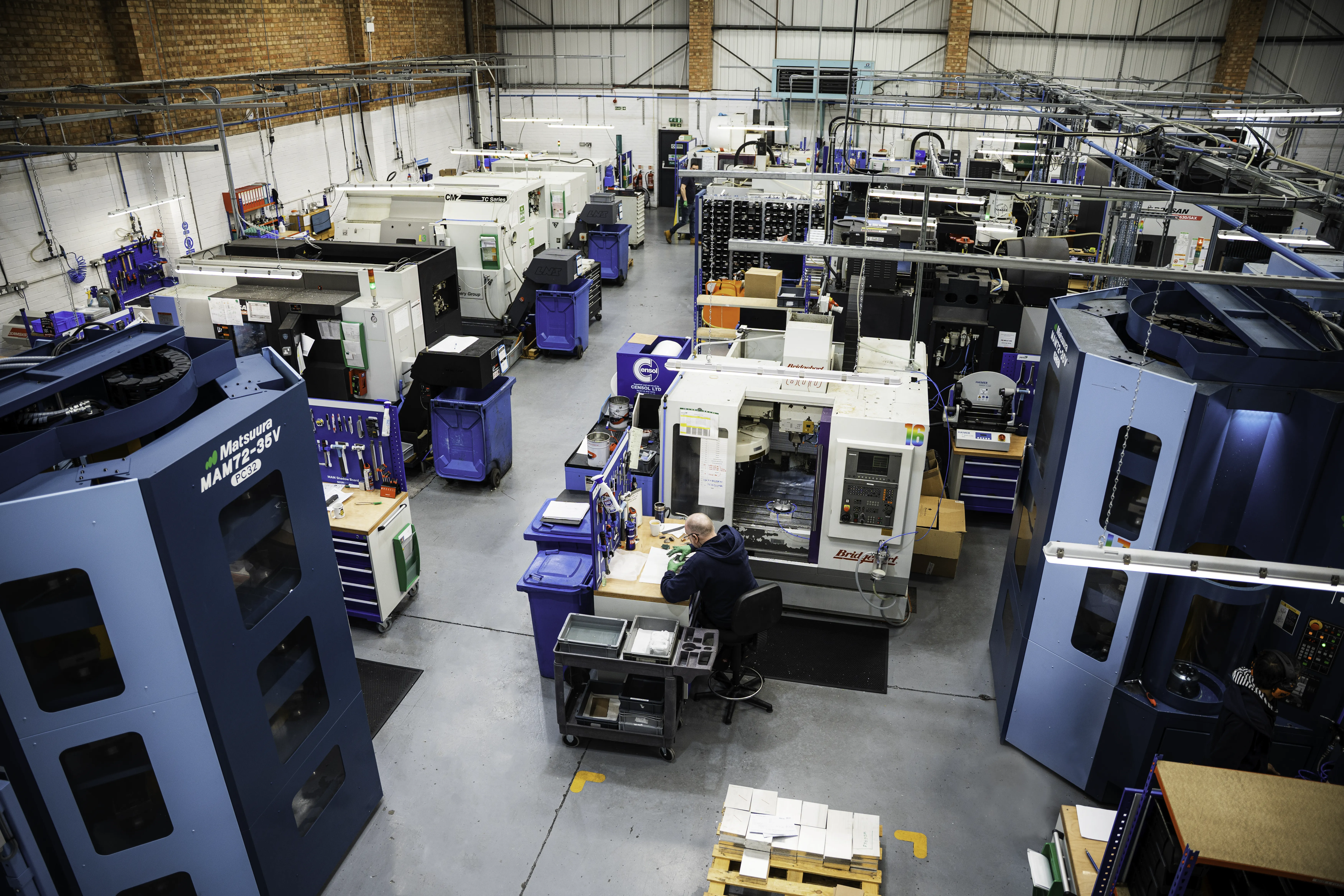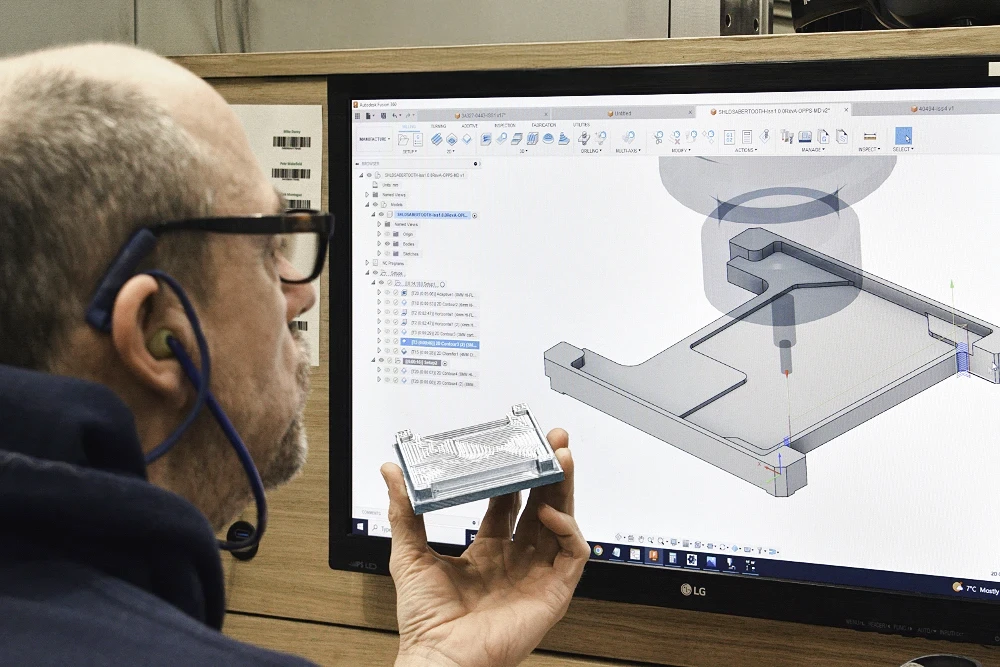 Get a quote
Get a quoteIf you’re responsible for sourcing machined components, you’ve likely faced this question: should you place work with a UK CNC supplier or look overseas?
It’s not a simple cost comparison. The decision affects timelines, paperwork, and the level of control you keep over quality and delivery.
This article sets out the practical pros and cons of both routes — not to persuade you one way or the other, but to help you weigh up what fits your business best. Every operation has different pressures, and the right answer depends on your priorities.
Procurement and leadership teams often approach this decision from different angles. Buyers look closely at cost, compliance, and reliability. Managing Directors tend to focus on risk, continuity, and overall impact on performance and margin.
Both perspectives matter. The challenge is balancing them.
Price, capability, communication, logistics, and compliance all play a part. The aim here is to make each of those factors transparent so you can judge where the true value lies — not just the lowest quote.
Overseas manufacturing can seem appealing, particularly when unit costs come in lower. For many businesses, it works well — especially when designs are stable and schedules allow flexibility.
However, it also introduces new variables that are often easy to overlook during the quotation stage. Importantly, not every overseas supplier appears to be one. Some companies present themselves as UK-based yet subcontract or outsource machining abroad, handling customer communication from the UK while production takes place elsewhere. In practice, buyers can face many of the same hidden challenges as working directly with offshore suppliers.
Understanding these realities helps clarify where overseas sourcing can genuinely deliver value — and where it can introduce added risk. Below, we’ve outlined the key advantages and disadvantages to consider before making your decision.

Lower unit cost
Labour and running costs are generally lower in regions such as Eastern Europe and Asia. For high-volume, repeat work, this can deliver meaningful savings.
High production capacity
Large machining clusters often operate multiple shifts and can accommodate big, continuous orders with ease.
Integrated supply chains
Some overseas facilities manage machining, finishing, and assembly in-house. Fewer handovers can simplify the process for buyers who need a single point of contact.
Longer and less predictable lead times
Freight time, customs, and logistics delays add uncertainty. What looks like an eight-week lead time can become twelve if transport or paperwork slow down.
Communication barriers
Different time zones and languages can make it harder to clarify drawings or agree changes quickly. Small misinterpretations at this stage can become expensive later.
Quality assurance challenges
Remote oversight limits visibility. Audits are difficult, and if something goes wrong, resolution can take longer.
Hidden and variable costs
Freight, duties, and currency fluctuations can quickly erode price advantages. If parts need rework, the savings disappear.
Reduced agility
Urgent changes or replacements are difficult once components are in transit. Air freight can shorten delays but adds cost.
When sourcing domestically, ensure your supplier genuinely manufactures in the UK rather than acting as a broker or outsourcing overseas. A UK office doesn’t always mean UK production.
Sourcing within the UK brings fewer unknowns. You can pick up the phone, visit the workshop, or get same-day feedback on a drawing. The trade-off is typically higher hourly rates — but also greater visibility and control.
To help weigh whether that extra control offsets the higher cost, it’s useful to look at the main advantages and disadvantages of working with UK-based CNC suppliers.

Quality and compliance
Many CNC suppliers hold ISO 9001 certification, but not all certifications carry the same weight. In the UK, accreditations issued by UKAS — the United Kingdom Accreditation Service — are widely recognised for their rigour and reliability. UK-based suppliers with UKAS-backed certification demonstrate that their quality management systems have been independently verified to a high standard.
Shorter lead times
Geographic proximity keeps schedules tighter. It’s easier to protect milestones without building in large buffers.
Clear communication
Shared working hours and no language barriers mean fewer misunderstandings. Engineers and estimators can discuss requirements directly.
Simplified logistics
With no customs clearance, import duties, or long-distance freight, logistics are simpler and more predictable. Shorter transport routes also mean fewer handling stages, lowering the risk of damage to delicate or precision-critical components during transit.
Audit and accountability
You can visit, verify, and see the process for yourself. That confidence often matters more than the initial cost difference.
Sustainability benefits
Shorter supply chains mean lower transport emissions and less packaging. For many firms, that aligns with wider sustainability commitments.
Higher hourly rates
Wages and overheads are higher, so per-part costs usually follow.
Capacity limitations
Demand can stretch lead times for certain materials or complex work.
Finite finishing options
Specialist processes like anodising may rely on subcontractors, which can extend delivery slightly.
Limited scalability for very high volumes
For large-scale production, UK suppliers may not always match the capacity or unit-cost efficiency of larger overseas facilities.
Paperwork accuracy isn’t the most exciting part of procurement, but it’s often where problems start. A clean delivery note and correct documentation mean fewer holds at goods-in.
When assessing suppliers — UK or overseas — check that they can:
Getting this right at the outset prevents time lost later to chasing, clarifying, or rejecting deliveries.
It’s easy to compare quotes line by line. But headline price rarely tells the whole story.
Total cost of ownership (TCO) takes into account everything that happens after the PO — from admin time and QA effort to rework, logistics, and communication.
A lower unit price can become more expensive if it leads to more time spent managing the process, expediting deliveries, or sorting documentation errors.
The same applies to risk. If late parts stop production or delay a customer delivery, the cost quickly outweighs the saving.
To get a realistic comparison between suppliers, it’s important to consider every factor that contributes to the true cost of machining — not just the figure on the quotation. Freight, duties, brokerage fees, and currency conversion can all add up quickly when sourcing from overseas, especially if rates fluctuate during production or shipping.
Administrative time is another hidden cost. Every hour spent clarifying details, managing changes, or chasing delivery updates represents time taken away from higher-value work. Similarly, nonconformance issues such as rework or replacement parts can quickly erode the savings that a lower unit price might initially suggest.
You should also factor in the schedule impact of any delays and the potential cost of expediting to recover lost time. Finally, if finishing processes such as anodising or plating involve separate subcontractors or additional transport, those logistics can further affect total cost and delivery predictability.
When you account for all of these variables together, you gain a much clearer view of value — and a far more accurate picture of which supplier offers the best outcome for your business.
Governance might not be the first thing you consider when choosing a supplier, but it’s what keeps projects on track. Strong systems and transparent reporting give confidence that schedules are realistic and issues are managed before they escalate.
When reviewing potential partners, ask for evidence of performance — such as On Time In Full (OTIF) results and examples of how they’ve recovered from past delays. Understanding typical lead times by complexity and whether capacity reservations are available can also help you plan more accurately.
Clear communication is another sign of good governance. A reliable supplier should confirm orders promptly, provide regular progress updates, manage drawing changes, and conduct thorough pre-despatch checks. It’s also worth asking how they handle disruptions, from equipment failure to logistics delays.
These principles apply to both UK and overseas suppliers. The difference lies in how visible the process is and how quickly you can step in if something changes.
There are times when sourcing overseas can seem like the logical move. High-volume, repeat work where small variations are acceptable often fits this model well. It can also suit stable designs with minimal engineering changes or programmes where cost carries more weight than speed. For some businesses, managing import paperwork, currency exposure, and extended logistics is simply part of the process.
However, overseas relationships are usually more transactional. Communication tends to happen through intermediaries or account handlers rather than engineers, which can make collaboration slower and less personal. This structure works when priorities are purely commercial — but it can be harder to build the trust, responsiveness, and shared understanding that come from direct access to the production team.
When considering overseas supply, make sure your cost analysis includes freight and potential recovery costs, and confirm that continuity plans are in place to protect delivery schedules if delays occur.
Domestic sourcing suits businesses that value communication, collaboration, and control as much as cost. It’s ideal for projects involving tight-tolerance or high-complexity components, full documentation traceability, and iterative design feedback. For programmes where fast recovery and close coordination protect key milestones, working with a UK partner offers both proximity and partnership.
Choosing a UK-based supplier often means gaining a long-term relationship — not just a vendor. You can speak directly with engineers, visit the facility, and resolve issues face-to-face, which helps prevent miscommunication and build mutual trust. This depth of understanding leads to better outcomes, faster turnaround on adjustments, and smoother project flow over time.
When choosing UK supply, ensure documentation aligns with your systems and that your supplier offers clear capacity visibility and robust exception processes to keep schedules on track.
Before finalising a supplier, always verify where the machining physically takes place. A UK address on a website doesn’t guarantee UK production. Transparency about manufacturing location is key to avoiding hidden risks.
Both UK and overseas suppliers can deliver good results when chosen for the right reasons.
Overseas machining may lower unit cost for stable, high-volume work with flexible deadlines. UK machining offers tighter control, faster communication, and easier governance for precision-critical projects.
The best choice depends on your tolerance for cost versus control — and your confidence in managing the risks that come with each route.
Confirm not just who manages your order, but where your components are actually made. Some suppliers operate UK offices yet send production overseas.
Choose based on evidence, not assumption. Compare suppliers on TCO, documentation fit, and delivery governance. Whether you buy in Portsmouth or abroad, the best partner is the one who helps you deliver predictable outcomes with the least friction.

This guide covers what is DFM, DFM meaning, how it fits into engineering and manufacturing, and how to improve your design so it’s ready for efficient production.

JOSCAR (Joint Supply Chain Accreditation Register) is a supplier accreditation system used by the aerospace, defence, and security sectors to verify that companies meet the required standards for compliance, quality, and business practices.

You love the brushed aluminium finish on your top-of-the-range designer laptop. And you want the same finish for the high-end medical device you're specifying. But this may not be as easy as you think. The aluminium grade you want may not be readily available. Or the finishing may require special techniques.